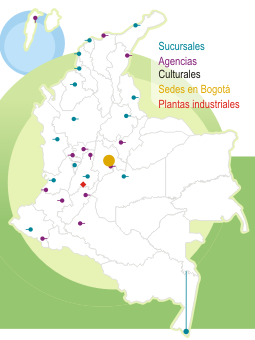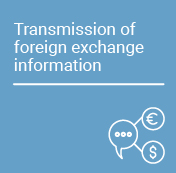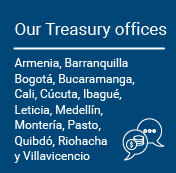Journal Essays on Economic Policy (ESPE) - Credit and real effects in Colombia 2000-2017: evidence with microdata
In the journal Essays on Economic Policy (ESPE) - we disclose the results and policy proposals that arise from academic research carried out at the Banco de la República. When you read us, always keep in mind that the content of our articles, as well as the analyzes and conclusions derived from them, are the sole responsibility of their authors. The material disclosed in our ESPE magazine does not compromise or represent the opinion of Banco de la República or that of its Board of Directors.
Findings regarding liquidity shocks
Two liquidity shocks significantly affected credit supply. The first occurred in March 2014, an exogenous demand shock for public debt securities due to their increased weighting in two of JP Morgan's emerging market asset indices. These indices are replicated by investment funds to obtain asset returns. We find that banks made a recomposition of their balance sheets from securities to loans. Of the total credit supply granted between March-June 2014, one-third was due to the liquidity shock. Additionally, once the impact of the liquidity shock on credit supply was established, we analyzed how this credit increase was reflected in firm performance variables. We found that the most important real effect was that the liquidity shock explained about 10% of the increase in firms' average investment between 2014 and 2013.
The second liquidity shock that affected the credit cycle in the period in question was the international financial crisis of October 2008 with the fall of Lehman Brothers. We studied the effect on both credit supply and export performance, as this sector has a high dependence on external financing. Additionally, we analyzed the case of agricultural exports, which were less affected than others. We found that a bank with a one percentage point increase in financial dependence on foreign sources before the crisis reduced exporters' credit supply by 2 percentage points after the crisis. Regarding export behavior, the fall in total exports due to the liquidity shock was such that a 10 percent drop in credit balance reduced the value of non-agricultural exports by 2.57 percent but affected agricultural exports less. Given that agricultural exports were less affected by the liquidity shock, we examined the role that certain agricultural credit reforms taken during 2006 and 2007, which favored some firms with export potential, might have played. The average balance for a potentially eligible individual compared to the rest—after credit expansion—is higher by between 22.3 and 23.3 percent. We found that these measures helped counteract the negative impact of the financial crisis on these exports, as did the commodity price boom that occurred during the period, and the good performance that the benefited firms had been showing before the liquidity shock.
Findings regarding macroprudential policy shocks
Macroprudential policy also played an important role in credit supply performance. Before the international financial crises of 2007-2009, financial regulation measures focused basically on banks' solvency ratio. After the crises, macroprudential measures were implemented, both in Colombia and around the world, which are those measures focused on controlling excessive credit growth through regulation of both the asset and liability sides of banks and their capital. These measures include, for example, countercyclical provisions, loan-to-value ratio, banks' foreign currency exposure, and capital flow controls.
This document finds that in developed countries, the most used instrument is the loan-to-value ratio, while in emerging markets it is foreign currency exposure.
In Colombia's case, we analyzed the impact of implementing reserve requirements, capital flow controls, and the introduction of countercyclical provisions. During the period under consideration, there was an excessive credit boom located between March 2006 and September 2008. These measures had a considerable effect on reducing credit supply. In particular, the capital flow control measure contributed to reducing the total indebtedness of firms most exposed to external financing by about 50 percent compared to those less exposed before the introduction of the policy in May 2007.
Findings regarding monetary policy shocks
Credit supply and the real sector of the economy also responded to monetary policy implemented between 2000-2017. In the document, we analyze the effect of monetary policy in light of two channels: the credit channel and the risk-taking channel. The first is a more traditional channel that basically focuses on the demand side of firms' credit and studies credit behavior in terms of its volume in response to a monetary policy stance. When policy interest rates decrease, asset prices increase, and firms' better performance leads them to demand more credit. Here, findings indicate that monetary policy has been effective in stimulating the economy or reducing excessive credit booms when necessary. In this regard, a 1% monetary policy expansion causes an increase in the total loan portfolio of about 3% and an increase in firms' operating income of about 10%, among others.
The second, the risk-taking channel, is a supply channel that analyzes the composition of credit, in terms of its quality, in response to a monetary policy stance where interest rates are considered to be below a certain benchmark for a very long period, four to five years as happened in advanced countries before the recent international financial crises. We find that in Colombia, when the policy interest rate is below the benchmark by 1 percentage point, the credit supply to risky borrowers increases by 10.5%, for the average bank, for the economy as a whole. Additionally, a less capitalized bank increases its credit supply to riskier borrowers when interest rates are very low by 34.8% more than a more capitalized bank. Finally, during the analysis period, banks took more risk with the agricultural and services sectors and with less leveraged firms with lower profits, that is, with those most credit-constrained.
This document studies the shocks that affected credit supply in Colombia during 2000-2017: liquidity shocks, macroprudential policy shocks, and monetary policy shocks. It analyzes their impact on the real sector of the economy.































































